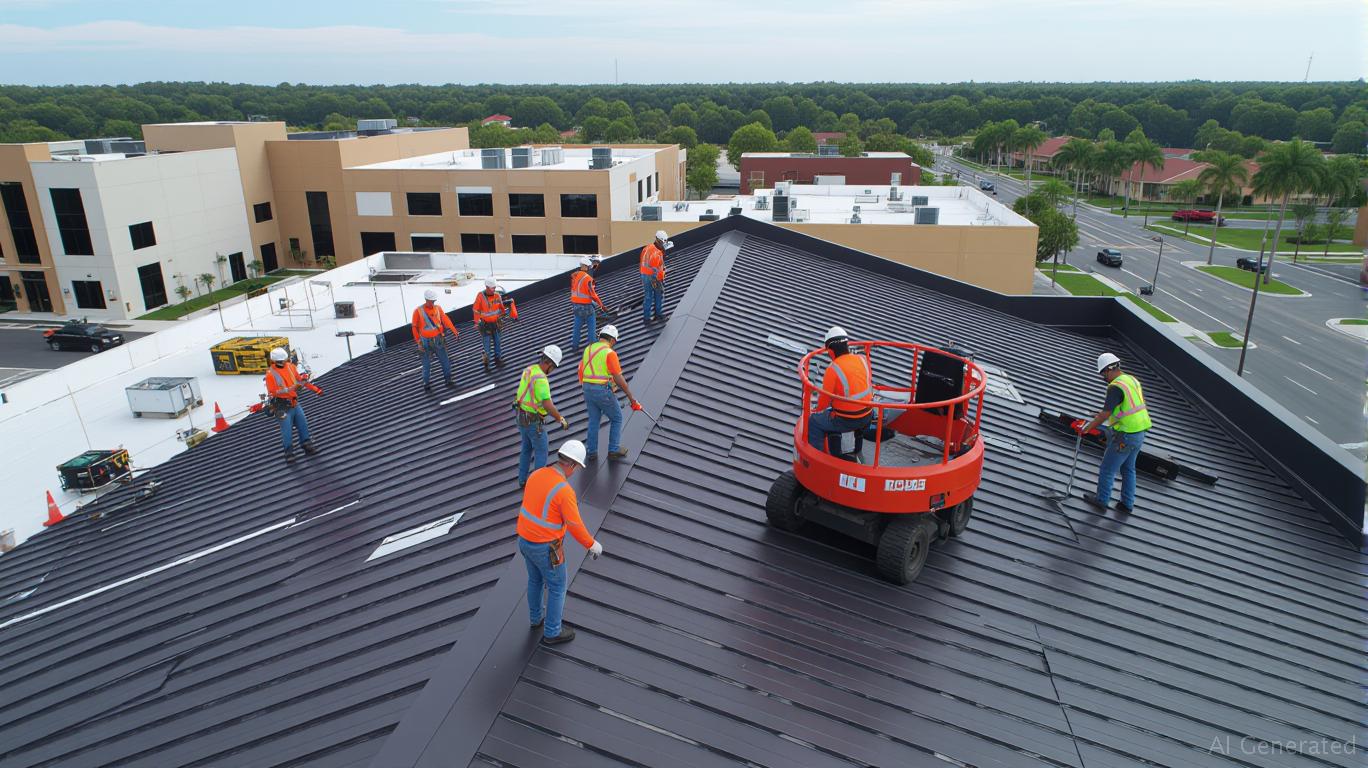TopBuild's Progressive Move: Securing Growth in the Non-Discretionary Infrastructure Boom
The U.S. infrastructure crisis is no longer a distant threat—it's a present-day reality. Aging housing stock, extreme weather events, and underinvestment in maintenance have created a perfect storm for non-discretionary repair demands. Against this backdrop,
Corp.'s $810 million acquisition of Progressive Roofing emerges as a masterstroke, positioning the company to capitalize on a $75 billion commercial roofing market that's both resilient and ripe for consolidation.A Strategic Pivot to Non-Cyclical Demand
TopBuild's move into commercial roofing isn't just about expanding its service portfolio—it's a deliberate shift toward stabilizing its revenue stream.

Financial Fortitude and Immediate Value
The transaction's terms underscore TopBuild's discipline. Valued at 9.1x Progressive's trailing EBITDA, the deal trades at a discount to peers in the construction and maintenance sector, where median multiples for non-cyclical players often exceed 10x. With $5 million in synergies expected post-integration, the acquisition becomes immediately accretive to TopBuild's adjusted EPS. This financial prudence is critical: the pro forma net debt/EBITDA ratio of 1.6x leaves ample room for further acquisitions while avoiding overleveraging. In a sector where many firms have overextended during the pandemic boom, TopBuild's conservative approach signals long-term strategic confidence.
Operational Synergies: A Blueprint for Integration
The operational alignment between the two companies is striking. Both rely on a decentralized branch model, with local teams empowered to serve clients while benefiting from centralized support in procurement, technology, and safety protocols. Progressive's emphasis on data-driven analytics and supplier partnerships mirrors TopBuild's existing systems, reducing friction in integration. Perhaps most importantly, the cultural overlap—shared priorities on employee well-being and customer-centricity—minimizes the risk of post-merger attrition. This smooth transition allows TopBuild to retain Progressive's 1,700-strong workforce and 12 branch locations, instantly scaling its presence in key markets like Texas, Florida, and the Midwest.
Market Context: A Fragmented Sector with Tailwinds
The commercial roofing industry's fragmentation is a gift for TopBuild. With no single player dominating more than 5% of the market, consolidation opportunities abound. Progressive's existing pipeline of acquisition targets—fueled by its 20-year track record of M&A—provides a runway for further growth. Meanwhile, demand drivers are both structural and urgent:
- Aging Infrastructure: Over 60% of U.S. commercial roofs are over 10 years old, and re-roofing costs rise exponentially with delays.
- Climate Catastrophes: The National Oceanic and Atmospheric Administration reports a 200% increase in billion-dollar weather disasters since 2000, directly boosting demand for emergency repairs.
- Stable Customer Verticals: Progressive's client base spans education, healthcare, and government sectors—industries with predictable funding and minimal sensitivity to economic downturns.
Risks and Considerations
No acquisition is without risks. Regulatory hurdles could delay the Q3 closing timeline, and execution risks remain in integrating operations. Additionally, while commercial roofing is less cyclical, it's not immune to economic shifts—recessions could slow new construction (which accounts for 30% of Progressive's revenue). However, TopBuild's focus on re-roofing and maintenance mitigates this exposure.
Investment Thesis: A Play on Infrastructure Resilience
For investors seeking exposure to non-discretionary infrastructure demand, TopBuild's pivot to commercial roofing is compelling. The deal strengthens its moat in building envelope solutions (insulation, roofing, and exterior systems) while reducing reliance on volatile markets. With a pro forma EBITDA of $570 million and a manageable debt load, TopBuild is well-positioned to execute further acquisitions in fragmented adjacent sectors like storm damage restoration or municipal infrastructure services.
Final Take
The U.S. infrastructure backlog isn't shrinking—it's growing. TopBuild's acquisition of Progressive isn't just a tactical move; it's a strategic bet on the inevitability of repair-driven demand. For investors, this deal marks a shift from a niche insulation player to a holistic provider of critical infrastructure services. In an era where resilience trumps growth, TopBuild is building an empire on the bedrock of necessity.
Sign up for free to continue reading
By continuing, I agree to the
Market Data Terms of Service and Privacy Statement

Comments
No comments yet